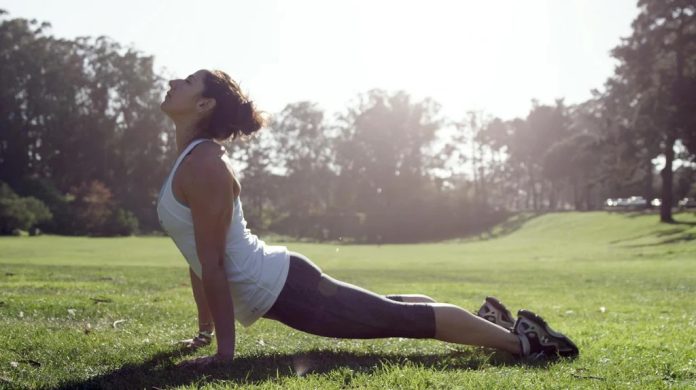Flexibility is an essential component of fitness that often gets overlooked in favor of strength and cardio training. However, improving flexibility can lead to better posture, reduced risk of injury, and enhanced overall movement. Whether you’re an athlete, someone who sits at a desk all day, or just someone wanting to improve your range of motion, adding flexibility training to your routine is crucial. In this article, we will explore the best types of workouts to improve flexibility, the benefits they offer, and how to find classes near you.
1. Why Is Flexibility Important?
Before diving into specific workouts, it’s essential to understand why flexibility is important. Flexibility refers to the ability of your muscles and joints to move through their full range of motion. It is important for everyday movements like bending, twisting, and reaching, as well as for more demanding activities like sports or dancing.
Benefits of improving flexibility include:
- Enhanced Performance: Whether you’re lifting weights, running, or participating in sports, improved flexibility can help you perform movements more efficiently.
- Reduced Risk of Injury: When muscles are flexible, they are less likely to become strained during physical activity. Flexibility also helps protect joints from excessive stress.
- Improved Posture: Many people suffer from poor posture due to tight muscles, especially in the back, shoulders, and hips. Flexibility training can help alleviate these issues, improving posture and reducing pain.
- Increased Mobility: As we age, flexibility naturally decreases, which can limit our ability to move easily. Flexibility training helps maintain mobility, allowing for a more active lifestyle later in life.
2. The Best Types of Workouts for Flexibility
Several types of workouts can help improve flexibility, each offering unique benefits. Here are some of the best options:
A. Yoga
Yoga is one of the most popular and effective forms of exercise for improving flexibility. It involves a series of postures and movements designed to stretch muscles and improve joint mobility. Yoga also focuses on balance and mindfulness, making it an excellent option for both physical and mental well-being.
- Types of Yoga for Flexibility: Hatha yoga, Vinyasa yoga, and Yin yoga are all great styles for flexibility. Yin yoga, in particular, focuses on holding deep stretches for longer periods, allowing for a deeper release of tension in the muscles and connective tissues.
- Benefits of Yoga for Flexibility: Yoga not only stretches muscles but also strengthens them, helping to support and stabilize the joints. Regular practice can lead to increased range of motion, better balance, and reduced muscle stiffness.
B. Pilates
Pilates is another excellent workout for improving flexibility. It focuses on controlled movements that strengthen the core while stretching and elongating muscles. Pilates often uses specialized equipment like the reformer or simply a mat, making it accessible for people at all fitness levels.
- How Pilates Improves Flexibility: Pilates exercises target muscle groups that are often neglected, such as the spine, hips, and shoulders. The emphasis on proper alignment and controlled movement allows for deeper stretches that improve both flexibility and strength.
- Benefits of Pilates: Pilates not only improves flexibility but also enhances core stability, balance, and posture. It is especially effective for those recovering from injury or looking to prevent future injuries.
C. Dynamic Stretching
Dynamic stretching is a type of flexibility training that involves moving through a range of motion in a controlled manner. Unlike static stretching, where you hold a stretch for a prolonged period, dynamic stretching focuses on fluid, repetitive movements.
- Examples of Dynamic Stretches: Leg swings, arm circles, and torso twists are common dynamic stretches that prepare your muscles for more intense physical activity.
- Benefits of Dynamic Stretching: This type of stretching is excellent for warming up before a workout or sports activity. It improves flexibility while increasing blood flow to the muscles, reducing the risk of injury during exercise.
D. Tai Chi
Tai Chi is a form of martial art that focuses on slow, deliberate movements and controlled breathing. While it is often associated with relaxation and mindfulness, Tai Chi also enhances flexibility, balance, and muscle strength.
- Tai Chi for Flexibility: The slow, flowing movements in Tai Chi help to gently stretch muscles and improve joint mobility. Tai Chi is especially beneficial for older adults or those looking for a low-impact way to improve flexibility.
- Benefits of Tai Chi: In addition to flexibility, Tai Chi improves coordination, balance, and mental clarity. It is a great option for anyone looking for a holistic workout that enhances both physical and mental well-being.
3. Finding Flexibility Classes Near You
Now that you know the best workouts for flexibility, the next step is finding classes that fit your schedule and preferences. Here are some ways to locate flexibility-focused classes near you:
A. Local Gyms and Fitness Studios
Most gyms and fitness studios offer classes like yoga, Pilates, or stretching sessions specifically designed to improve flexibility. You can inquire at your local gym or fitness center about their schedule and class offerings. Many places offer a free trial class, so you can try different options before committing to a regular routine.
- How to Search: Check out websites or apps of popular gym chains or local studios to browse their class schedules. You can filter by class type and time, making it easy to find a session that fits your lifestyle.
B. Yoga and Pilates Studios
If you prefer a more specialized setting, consider visiting a dedicated yoga or Pilates studio. These studios often offer classes tailored to different experience levels, from beginners to advanced practitioners. Additionally, some studios focus on specific types of yoga or Pilates that prioritize flexibility, such as Yin yoga or reformer Pilates.
- How to Search: Look for studios in your area by searching online or using platforms like ClassPass. Many studios offer introductory deals, which can be a great way to try different styles and teachers before settling on a studio that fits your needs.
C. Community Centers and Parks
Many community centers, local parks, and recreation programs offer affordable or even free flexibility classes, especially yoga or Tai Chi. These classes can be a great way to improve your flexibility while connecting with your local community.
- How to Search: Visit your local community center’s website or contact them to inquire about their offerings. Many cities also organize outdoor yoga or Tai Chi sessions in public parks, particularly during warmer months.
D. Online Classes
If you prefer working out from the comfort of your home or don’t have any nearby classes, online flexibility classes are a great option. Many platforms offer live or pre-recorded classes in yoga, Pilates, and stretching. These platforms often have classes for all levels and allow you to practice at your own pace.
- Popular Online Platforms: Websites and apps like Yoga with Adriene, Glo, and Alo Moves offer a variety of flexibility-focused classes that you can access anytime, anywhere.
4. How to Choose the Right Class for You
When deciding on a flexibility class, it’s important to consider your fitness level, goals, and preferences. Some questions to ask yourself include:
- What is my current fitness and flexibility level? If you’re a beginner, you may want to start with a gentle yoga or beginner Pilates class before moving on to more advanced sessions.
- What type of workout do I enjoy? If you enjoy mindful, meditative practices, yoga or Tai Chi might be a better fit. If you prefer more dynamic or core-focused workouts, Pilates could be ideal.
- What are my flexibility goals? If you’re looking to improve overall flexibility, any of the above workouts can help. However, if you’re targeting specific areas (like hamstrings, hips, or shoulders), look for specialized classes that focus on those areas.
Improving your flexibility is one of the most beneficial things you can do for your body, no matter your fitness level. Yoga, Pilates, Tai Chi, and dynamic stretching are some of the best workouts to incorporate into your routine to boost flexibility, mobility, and overall well-being. Whether you prefer in-person classes at a local gym or studio or want to work out from home with online sessions, there are plenty of ways to get started. By finding the right class for you, you’ll be on your way to a more flexible, mobile, and healthier lifestyle.








